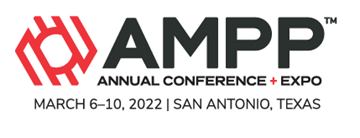Search
Coatings
View as
Sort by
Display
per page
A Fracture Mechanics Approach To Characterizing Hydrogen Embrittlement Of Fasteners
Product Number:
51321-16798-SG
Publication Date:
2021
$20.00
A Further Look At The Impacts Of Corrosion Inhibitor On Scale Prevention
Product Number:
51322-17676-SG
Publication Date:
2022
$20.00
A Ground Floor Opportunity in the World of Commercial Coatings Inspection
Product Number:
41216-978-SG
Publication Date:
2016
$20.00
A High Volume Production Multi-Use Polyurea Protective Coating
Product Number:
41206-221-SG
Publication Date:
2006
$20.00
A History Of Corrosion Improvement: Over the last few decades there has been significant improvement especially with automobiles.
Product Number:
41213-761-SG
Publication Date:
2013
$20.00
A Low VOC and Sprayable Siloxane Nonskid/Nonslip Coating for the U.S. Navy & Non-Military Markets
Product Number:
41214-826-SG
Publication Date:
2014
$20.00
A Methodology, Database, And Maps For Seasonally-Adjusted Soil Resistivity
Product Number:
51322-18216-SG
Publication Date:
2022
$20.00
A New Film Thickness Gage With Built-in Temperature and Humidity Measurement
Product Number:
51220-293-SG
Publication Date:
2020
$20.00
A New Protocol for Evaluating the Effectiveness of Coatings Used to Reduce Corrosion of Steel Structures
Product Number:
51220-295-SG
Publication Date:
2020
$20.00
A New Water-Based PVDF System for Weatherable Coatings
Product Number:
41209-500-SG
Publication Date:
2009
$20.00
A Novel Alternative Surface Preparation for Duplex Coating of Galvanized Steel
Product Number:
41213-783-SG
Publication Date:
2013
$20.00
A Novel Methodology For Addressing Corrosion Under Insulation (CUI) Utilizing Corrosion Inhibitor Impregnated Self-Amalgamating Silicone Based Tape
Product Number:
51322-17931-SG
Publication Date:
2022
$20.00












